|
Eric I of Saxe-Lauenburg (c.1280–1360) was a son of John I, Duke of Saxony, and Ingeborg Birgersdotter of Småland (*ca. 1253–30 June 1302*, Mölln), a daughter or grandchild of Birger jarl. He ruled Saxony jointly with his uncle Albert II and his brothers Albert III and John II, first fostered by Albert II, until coming of age. In 1296 Eric, his brothers and their uncle divided Saxony into Saxe-Wittenberg, ruled by Albert II, and Saxe-Lauenburg, jointly ruled by the brothers between 1296 and 1303 and thereafter partitioned among them. Eric then ruled the branch duchy of Saxe-Ratzeburg-Lauenburg until 1338.
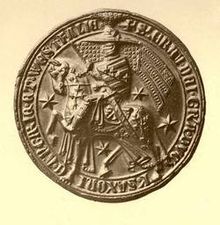
Gerhard III of Holstein-Rendsburg ( c. 1292 – 1 April 1340), sometimes called Gerhard the Great, and in Denmark also known as Count Gert or den kullede greve ("the bald count"), was a German prince who ruled Schauenburg and Holstein- Rendsburg and during the interregnum of 1332–40 also a large part of Denmark.
Walter II, Lord of Egmond (in Dutch: Wouter II van Egmond) (c. 1283 – 3 September 1321) was Lord of Egmond. He was the second surviving son of Gerald/Gerard II of Egmond, who had died in 1300 before his own father William II, Lord of Egmond.
Beatrijs van der Doirtoghe/Doortoge (c. 1290 -11 September 1323) Beatrix of DoortogneÇ
Otto, Lord of Arkel ( c. 1330 – 26 March or 1 April 1396 [1]) was Lord of Arkel from 6 May 1360 until his death.
He was a son of John IV and his wife, Irmengard of Cleves.
Frederick III of Baden (1327 – 2 September 1353) was Margrave of Baden from 1348 to 1353.
Johann III, Count of Sponheim-Starkenburg, the Older (b. ca. 1315 – d. 30 December 1398), reigned over the County of Sponheim for 67 years. He also received many epithets such as "the Noble" and, because of his declining vision, "the Blind".
Johann III of Sponheim was the first son of Count Heinrich II of Sponheim and Loretta of Salm.
Louis the Junker of Hesse (1305 – 2 February 1345) was a German nobleman. He was the third son of Landgrave Otto I ofHesse and his wife Adelheid, a daughter of Otto III of Ravensberg.
Elisabeth (or Elise), a daughter of Count Simon II of Sponheim-Kreuznach. She was the widow of the Swabian Count Rudolph I of Hohenberg, who had died in 1336. Louis and Elisabeth had three children:
Amadeus or Amedeo of Savoy (1363 – 7 May 1402) was the son of James of Piedmont and his third wife Marguerite de Beaujeu
Casimir I of Cieszyn ( Polish: Kazimierz I cieszyński, Czech: Kazimír I. Těšínský, German: Kasimir I. von Teschen; 1280/90 – c. 29 September 1358), was Duke of Cieszynfrom 1315, Duke of Siewierz from 1337 and Duke of Bytom from 1357.
Bolesław of Bytom ( Polish: Bolesław bytomski; 1330 – c. 4 October 1355), was a Duke of Koźle from 1347 and Duke of Bytom since 1352 until his death.
Margareta of Sternberg ( Czech: Markéta ze Šternberka, Polish: Małgorzata ze Šternberka) (died aft. 5 June 1365) was a Moravian noblewoman and by marriage Duchess of Bytom.
She was the eldest child and only daughter of Jaroslav of Sternberg (Jaroslav ze Šternberka) by his second wife Margareta of Bílina (Machna z Bíliny). Margareta had two full-brothers, Aleš and Jan, and also two older half-brothers, Zdeněk (d. aft. 1408) and Smil (d. 1398), born from the first marriage of Jaroslav of Sternberg with a certain Eliška.
|
Danutė (ca. 1358 - ca. 24 November 1424) -who in baptism took the name Ana-, a daughter ofKęstutis and sister of Vytautas, both Dukes of Trakai and Grand Dukes of Lithuania; in consecuence, she was a first-cousin of the later King Władysław II Jagiełło of Poland (born Jogaila, son of Algirdas, a brother of Kęstutis).
Bernhard II, Prince of Anhalt-Bernburg (ca. 1260 – aft. 26 December 1323), was a German prince of the House of Ascania and ruler of the principality of Anhalt-Bernburg.
John II, Lord of Werle[-Güstrow] nicknamed The Bald (after 1250 – 27 August 1337), was from 1309 to 1316 co-regent of Werleand from 1316 to 1337 Lord of Werle-Güstrow. He was the second eldest son of John I of Werle and Sophie of Lindow-Ruppin.
Henry II, Lord of Mecklenburg, nicknamed the Lion (after 14 April 1266 – 21 January 1329 in Sternberg) was regent of Mecklenburg from 1287 to 1298, co-regent from 1298 to 1302 and ruled alone again from 1302 to 1329. He was the son of Henry I
Adolph VII Holstein von Holstein-Pinneberg-Schauenburg (Pinneburg), Graf 1297-1353
|
Otto, Lord of Lippe ( c. 1300 – c. 1360) was the ruling Count of Lippe-Lemgo from 1344 until his death.
Irmgard of the Marck
|
Nicholas I of Tecklenburg (also known as Nicholas I of Schwerin; died: 1367) was a son of Gunzelin VI, Count of Schwerin and Richardis, the daughter of Count Otto IV of Tecklenburg.
Helena, the daughter of Count Otto of Oldenburg-Wildeshausen-Altbruchhausen
Richarda of the Marck.
|
Bogislaw was the eldest son of Duke Barnim I by his first wife, sometimes said to be a daughter of King Eric X of Sweden.
Sophia of Brandenburg-Stendal (1300-1356) was a daughter of Margrave Henry I (1256–1318) and his wife Agnes of Bavaria(1276–1345).
Bernhard III, Prince of Anhalt-Bernburg (died 20 August 1348) was a German prince of the House of Ascania and ruler of the principality of Anhalt-Bernburg.
|
Gerhard II of Holstein-Plön (1254 - 28 October 1312), nicknamed the Blind, was Count of Holstein-Plön from 1290 to 1312.
Niklot I, Count of Schwerin (1250–1323) was the ruling Count of Schwerin-Wittenburg from 1299 until his death. He was a son of Count Gunzelin III of Schwerin and his wife, Margaret of Mecklenburg
|

|
Henry I, Count of Holstein-Rendsburg (1258–1304) was the first Count of Holstein-Rendsburg.
Heilwig (1265 – after 1324), the daughter of Count Floris of Bronckhorst
Nicholas II, Lord of Werle (before 1275 – 18 February 1316 in Pustow, near Güstrow) was Lord of Werle-Parchim from 1283 until his death, and from 1292 Lord of Werle. John I of Werle
Henry II, Lord of Mecklenburg, nicknamed the Lion (after 14 April 1266 – 21 January 1329 in Sternberg) was regent of Mecklenburg from 1287 to 1298, co-regent from 1298 to 1302 and ruled alone again from 1302 to 1329.
Magnus III (Swedish: Magnus Birgersson/Magnus Ladulås; 1240 – 18 December 1290) was King of Sweden from 1275 until his death in 1290.
Magnus, whose birth year has never been confirmed in modern times, was probably the second son of Birger Jarl (Birger Magnuson, 1200–66) and Ingeborg, herself the sister of the childless King Eric XI and daughter of King Eric X.
Albert (Latin Albertus; c. 1268 – 22 September 1318), called the Fat ( pinguis), was duke of Brunswick-Lüneburg.
Henry was a son of Margrave John I of Brandenburg and his third wife, Jutta, the daughter of Duke Albert I of Saxony.
Agnes of Bavaria (1276-1345) was a daughter of Duke Louis II of Upper Bavaria (1229–1294) and his third wife, Matilda of Habsburg (1253–1304).
Bernhard II, Prince of Anhalt-Bernburg (ca. 1260 – aft. 26 December 1323), was a German prince of the House of Ascania and ruler of the principality of Anhalt-Bernburg.
As the eldest son, he succeeded his father, Albert II, as Duke of Saxe-Wittenberg
Jutta (Brigitte) of Brandenburg (died: 9 May 1328 in Wittenberg), a daughter of Margrave Otto V of Brandenburg.
Gunzelin VI of Schwerin (died: 1327) was a son of Count Niklot I of Schwerin and his wife, Elisabeth of Holstein. In 1323, he succeeded his father in Schwerin-Wittenburg.
Richardis of Tecklenburg, daughter of Count Otto IV of Tecklenburg
Simon I, Lord of Lippe ( c. 1261 – 10 August 1344) ruled Lippe from 1273 until his death.
He was a son of Bernard IV and Agnes of Cleves. He was a great-nephew of Simon I, a bishop of Paderborn.
Adelaide of Waldeck (c. 1264 – c. 1339-1342) was a daughter of Lord Henry III of Waldeck and his wife Matilda of Arnsberg-Cuyk (also known as Matilda of Rietberg-Arnsberg).
|
Bogislaw was the eldest son of Duke Barnim I by his first wife, sometimes said to be a daughter of King Eric X of Sweden
John I, Lord of Mecklenburg, nicknamed the Theologian ( c. 1211 – 1 August 1264) was Lord of Mecklenburg from 1234 until his death.
Luitgart, the daughter of Count Poppo VII of Henneberg.
Barnim I the Good ( c. 1217/1219 – 13 November 1278) from the Griffin dynasty was a Duke of Pomerania ( ducis Slauorum et Cassubie) from 1220 until his death.
Marianna (d. 27 June 1252), whose parentage is disputed: she was either identified as a daughter of King Eric X of Sweden,[
Gertrude was born to Burkhard V, Count of Hohenberg (d. 1253), and his wife, Matilda of Tübingen

It is known that Birger grew up and spent his adolescence in Bjälbo, Östergötland but the exact date of his birth remains uncertain and available historical sources are contradictory. Examinations of his mortal remains indicate that he was probably about 50 upon his death in 1266 which would indicate a birth around 1216. However, his father Magnus Minnesköld is assumed to have died no later than 1210, which would lead to an assumed birth a few years earlier. Under any circumstance, he was the son of Ingrid Ylva, who according to Olaus Petri was a daughter of Sune Sik and granddaughter of King Sverker I of Sweden, which would make Birger a matrilineal member of the House of Sverker. His brothers or half-brothers — Eskil, Karl, and Bengt — were all born long before 1200, and it can therefore be assumed that they had another mother. He was also a nephew of the jarl Birger Brosa from the House of Bjelbo. The combination of this background proved to be of vital importance. [6][7

Gerhard I, Count of Holstein-Itzehoe (1232 – 21 December 1290) was the only count of Holstein-Itzehoe.
Elizabeth (d. c. 1280), a daughter of John I of Mecklenburg
Magnus Haakonsson ( Old Norse: Magnús Hákonarson, Norwegian: Magnus Håkonsson; 1 May 1238 – 9 May 1280) was King of Norway (as Magnus VI) from 1263 to 1280 (junior king from 1257). [1] One of his greatest achievements was his modernisation and nationalisation of the Norwegian law-code, after which he is known as Magnus the Law-mender (Old Norse: Magnús lagabœtir, Norwegian: Magnus Lagabøte). He was the first Norwegian monarch known to personally have used an ordinal number, although originally counting himself as "IV".
Ingeborg Eriksdotter ( c. 1244 – 24/26 March 1287) was a Danish princess. She was married to King Magnus VI of Norway and was Queen consort of Norway. Later as Queen dowager, she played an important part in politics during the minority of her son King Eirik II of Norway. [1]
Vitslav II (ca. 1240 – 1302), variously called Vislav, Vizlav, Wislaw, Wizlaw and Witslaw in English sources ( German: Wizlaw II) was a prince of Rügen. [1]
Nicholas I, Lord of Werle (c. 1210 – 14 May 1277), was Lord of Rostock from 1229 to 1234 and Lord of Werle from 1234 until his death. son of Henry II Borwin
Jutta, the daughter of Count Henry I of Anhalt.
|
Albert was the oldest surviving son of the first Brunswick duke Otto the Child and his wife, Matilda of Brandenburg. When his father died in 1252, he took over the rule of the duchy; later his younger brother John joined him.
Margaret of Sicily (also called Margaret of Hohenstaufen or Margaret of Germany) (1 December 1241, in Foggia – 8 August 1270, in Frankfurt-am-Main) was a Princess of Sicily and Germany, and a member of the House of Hohenstaufen. By marriage she was Landgravine of Thuringia and Countess Palatine of Saxony (German: Landgräfin von Thüringen und Pfalzgräfin von Sachsen).
Gerhard I, Count of Holstein-Itzehoe (1232 – 21 December 1290) was the only count of Holstein-Itzehoe.
Elizabeth (d. c. 1280), a daughter of John I of Mecklenburg
Brigitte Jutta, the daughter of Duke Albert I of Saxony and Agnes of Austria (1206–1226)
Konrad I of Głogów ( Polish: Konrad I głogowski; 1228/31 – 6 August ca. 1274) was Duke of Głogów (Glogau) from 1251 until his death.
Salome of Greater Poland also known as Salomea Odonicówna (literally daughter of Odonic) ( Polish: Salomea Wielkopolska or Odonicówna; b. c. 1225 – d. April 1267?), was a Polish princess member of the Piast dynasty from the Greater Poland branch and by marriage Duchess of Glogów.
He was the son Prince Nicholas I of Mecklenburg-Werle and his wife Princess Jutta of Anhalt the daughter of Prince Henry I of Anhalt and his wife Princess Irmgard of Thuringia.
Princess Sophie (b. 1240 - d. aft. 1284), daughter of King Abel of Denmark.
Vitslav II (ca. 1240 – 1302), variously called Vislav, Vizlav, Wislaw, Wizlaw and Witslaw in English sources ( German: Wizlaw II) was a prince of Rügen. [1]
Margrave Otto V of Brandenburg-Salzwedel (c. 1246 – 1298), nicknamed Otto the Tall, was a son of Margrave Otto III and co-ruler of Brandenburg with his cousin, Margrave Otto IV.
Judith of Henneberg-Coburg, a daughter of Count Herman I of Henneberg.


Sophie of Thuringia (20 March 1224 [1] – 29 May 1275) was the second wife and only Duchess consort of Henry II, Duke of Brabant and Lothier. She was the heiress of Hesse which she passed on to her son, Henry upon her retention of the territory following her partial victory in the War of the Thuringian Succession in which she was one of the belligerents. [2] Sophie was the founder of the Brabant dynasty of Hesse.
Otto I of Brunswick-Lüneburg (about 1204 – 9 June 1252), a member of the House of Welf, was the first duke of Brunswick-Lüneburg from 1235 until his death. He is called Otto the Child to distinguish him from his uncle, Emperor Otto IV.
|
|
|
|
|
|
|
|
|
|
|



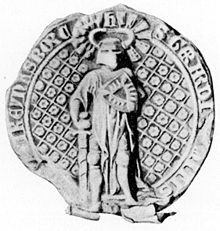





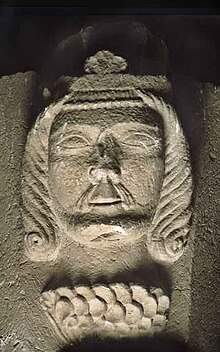
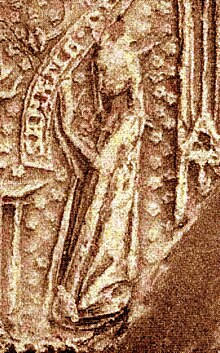



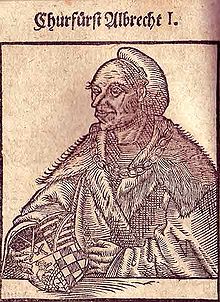
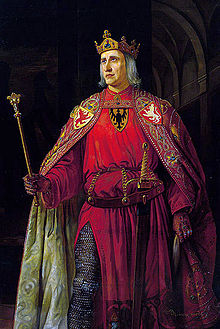



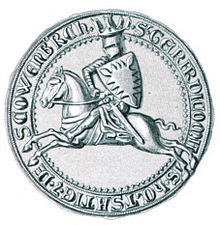





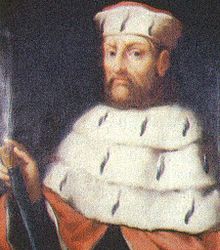






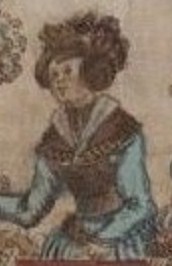
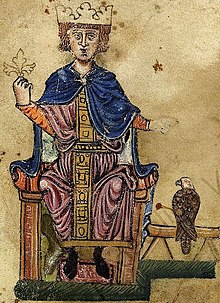
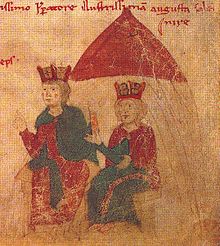

No hay comentarios:
Publicar un comentario